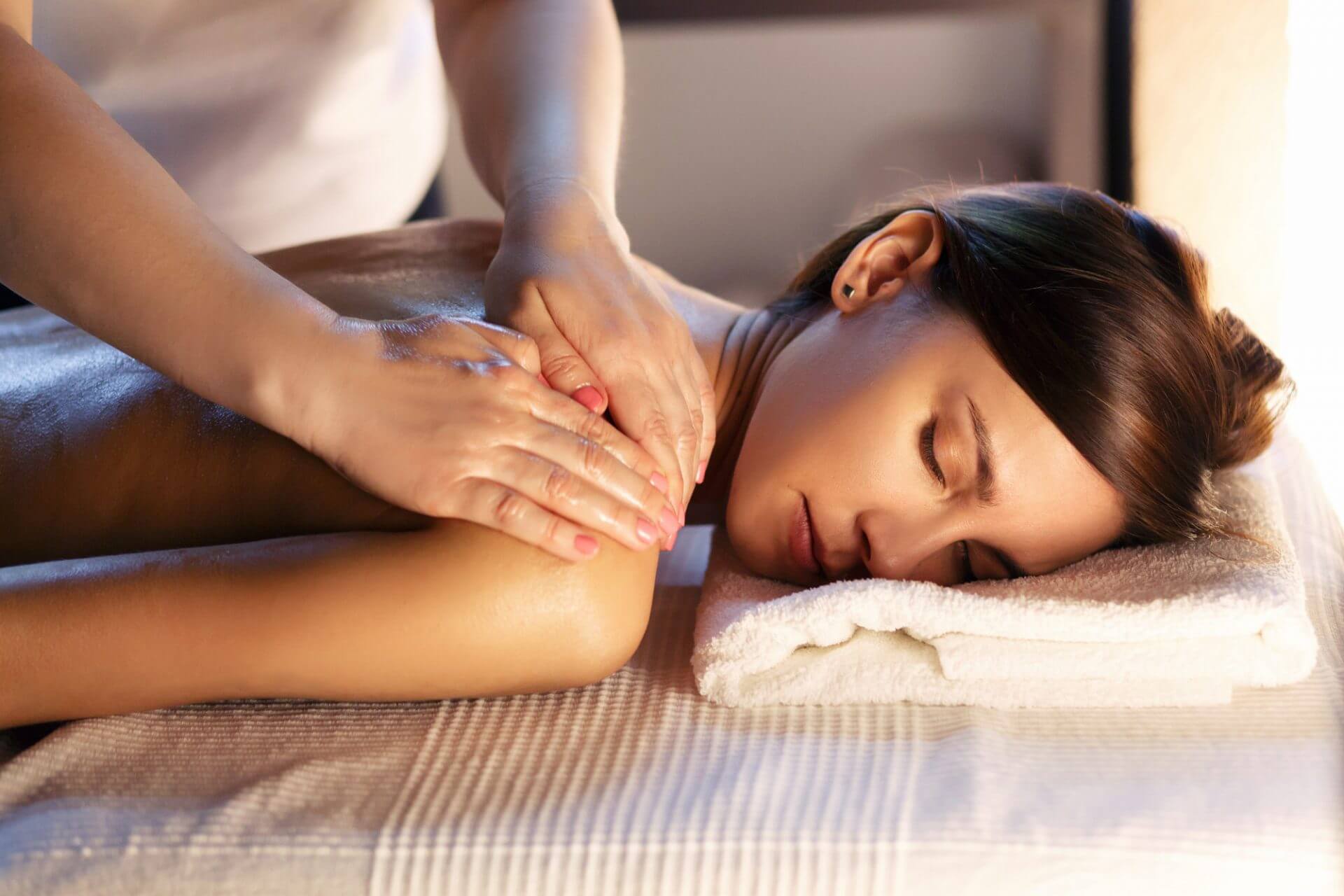
The Healing Power of Touch: Why Massage Therapy Is Essential for Modern Stress Relief
Massage therapy for stress relief.In today’s fast-paced world, where our lives revolve around screens, deadlines, and constant connectivity, finding balance can feel impossible. Amidst all the chaos, there’s one ancient practice that continues to provide comfort, renewal, and profound healing — massage therapy.
More than just a luxury indulgence, massage therapy benefits extend far beyond relaxation. Modern research shows that stress relief massage can lower cortisol levels, improve immunity, enhance sleep, and even reduce chronic pain. Combined with innovative wellness treatments and mindfulness techniques, massage has become a cornerstone of holistic well-being in the modern era.
This guide explores the science, art, and soul of massage therapy — revealing how the simple act of touch can restore harmony in body, mind, and spirit.
1. The Ancient Roots of Healing Touch

The history of massage therapy stretches back thousands of years. Ancient civilizations in Egypt, China, India, and Greece used various forms of touch-based healing to relieve pain, promote relaxation, and maintain overall health.
In ancient Egypt, hieroglyphs depict people massaging hands and feet — an early form of reflexology. The Chinese developed “Tui Na” massage as part of traditional Chinese medicine, emphasizing the flow of “Qi” (life energy). Meanwhile, Ayurvedic massage in India combined herbal oils and rhythmic strokes to balance the body’s doshas (energetic principles).
Even Hippocrates, the father of Western medicine, wrote, “The physician must be experienced in many things, but assuredly in rubbing.” He believed that massage could improve joint mobility and help the body heal itself.
Today’s wellness treatments are a modern evolution of these traditions — blending time-honored techniques with scientific understanding.
2. Understanding Stress in the Modern World
Before diving deeper into massage therapy benefits, it’s essential to understand the enemy: chronic stress.
Modern life constantly triggers our body’s “fight or flight” response. Emails, traffic, social media notifications — all these stimuli keep our nervous systems in a heightened state. When stress becomes chronic, cortisol (the stress hormone) remains elevated, leading to fatigue, insomnia, weakened immunity, muscle tension, and even depression.
According to studies by the American Psychological Association, over 75% of adults experience physical or emotional symptoms of stress weekly. The constant overload has made stress relief massage not just a luxury, but a necessity.
Massage directly counteracts this stress response — switching the body into “rest and digest” mode, where healing and restoration can occur.
3. The Science Behind Massage Therapy Benefits
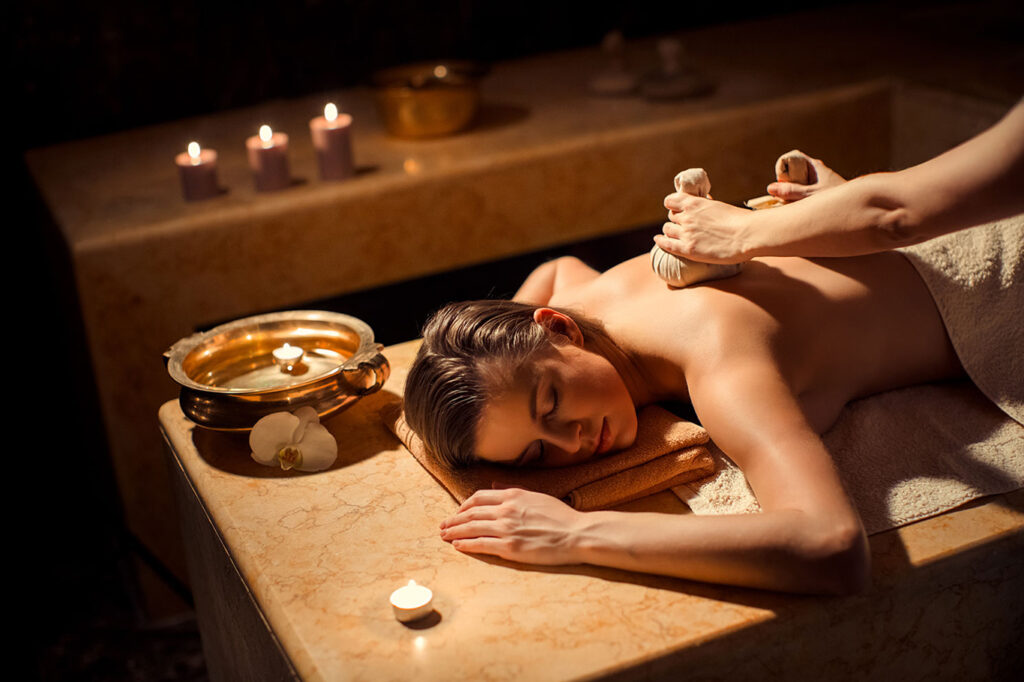
Modern research has validated what ancient healers knew intuitively: massage therapy benefits both body and mind through measurable physiological effects.
a. Reduces Cortisol and Increases Serotonin
Massage has been shown to reduce cortisol levels by up to 30% while boosting serotonin and dopamine — neurotransmitters responsible for happiness and calm. This hormonal balance is one reason stress relief massage leaves you feeling emotionally lighter and mentally clearer.
b. Improves Circulation and Oxygen Flow
By manipulating soft tissue, massage enhances blood and lymphatic circulation. Improved blood flow means more oxygen and nutrients reach muscles and organs, while waste products like lactic acid are removed more efficiently.
c. Relieves Muscle Tension and Pain
Whether caused by posture, exercise, or emotional strain, muscle tension is one of the most common physical effects of stress. Techniques like Swedish massage, deep tissue massage, and trigger point therapy target tight knots and restore mobility.
d. Boosts Immunity
A groundbreaking study by the Cedars-Sinai Medical Center found that just one session of Swedish massage significantly increased lymphocytes — immune cells that help fight infections.
e. Improves Sleep Quality
Because massage stimulates serotonin and reduces stress hormones, it naturally encourages better sleep patterns. Many clients report deeper rest and fewer episodes of insomnia after consistent sessions.
f. Supports Mental Health
Research suggests that massage may reduce symptoms of anxiety, PTSD, and depression. Touch stimulates the vagus nerve — part of the parasympathetic nervous system — helping regulate mood and emotional balance.
4. Different Types of Massage and Their Benefits

There isn’t one-size-fits-all when it comes to wellness treatments. Each form of massage offers unique benefits depending on your physical and emotional needs.
Swedish Massage: The Classic for Stress Relief
The most popular form of stress relief massage, Swedish massage uses long, gliding strokes and gentle kneading to relax muscles and improve circulation. Perfect for beginners, it’s deeply calming and ideal for reducing anxiety and tension.
Deep Tissue Massage: Targeting Chronic Pain
Using slower, more intense strokes, deep tissue massage reaches deeper muscle layers to treat knots and injuries. It’s great for athletes or those with back pain, stiffness, or poor posture.
Aromatherapy Massage: Healing Through Scent
Essential oils like lavender, eucalyptus, and chamomile are blended into the massage oil, enhancing relaxation and mental clarity. Aromatherapy is particularly effective for stress, fatigue, and insomnia.
Hot Stone Massage: Deep Relaxation Through Heat
Smooth, heated stones are placed along key points of the body to warm muscles and improve energy flow. The combination of heat and massage helps melt away tension and induce profound relaxation.
Thai Massage: Yoga Without the Effort
This ancient practice involves assisted stretching and rhythmic pressure along energy lines. It improves flexibility, energy, and mental focus — perfect for travelers or those who sit long hours at work.
Reflexology: Healing Through the Feet
Based on the principle that specific points on the feet correspond to organs and systems of the body, reflexology stimulates healing, improves circulation, and promotes inner balance.
Lymphatic Drainage Massage: Detox and Immune Boost
This gentle technique encourages lymph fluid movement, reducing swelling, improving skin tone, and helping detoxify the body.
5. The Emotional and Psychological Power of Touch
Beyond the physical massage therapy benefits, touch itself has a powerful emotional impact.
In an age dominated by digital communication, physical contact is becoming rarer — yet human touch is fundamental for emotional health. Studies show that compassionate touch releases oxytocin, the “bonding hormone,” which reduces fear and promotes feelings of trust and safety.
Massage recreates that connection. For many people, especially those struggling with loneliness or anxiety, the act of being touched with care can be profoundly healing.
6. Modern Innovations in Massage and Wellness Treatments

The wellness industry is evolving rapidly, combining ancient techniques with modern technology to enhance stress relief massage experiences.
Here are some exciting innovations shaping the future of massage:
a. Infrared Heat Therapy
Infrared beds or pads are used to penetrate deeper muscle layers, increasing circulation and relaxation. This enhances the effectiveness of traditional massage techniques.
b. Floating Therapy
Also known as sensory deprivation or “float tanks,” this method involves lying in warm, salt-saturated water in a silent, dark pod. It eliminates sensory input, allowing total relaxation and mental clarity. Float therapy often complements massage for complete stress relief.
c. Sound Bowl Healing
Incorporating Tibetan or crystal sound bowls into massage sessions adds a vibrational healing element. The gentle frequencies calm the nervous system and enhance meditative relaxation.
d. Aromatherapy and Personalized Oils
High-end spas now tailor massage oils based on the client’s mood and needs — energizing citrus for fatigue, lavender for sleep, or rose for emotional balance.
e. CBD and Herbal Infusions
Herbal wellness treatments and CBD-infused oils are increasingly popular for their anti-inflammatory and calming properties. They help reduce joint pain, muscle soreness, and anxiety.
f. Stillness Rooms and Mindful Spaces
Many modern spas now include “stillness rooms” — tranquil environments for meditation or breathwork before or after a massage. These spaces enhance the psychological benefits of touch by helping guests reconnect with themselves.
7. How Massage Therapy Fits Into Holistic Wellness

Massage therapy is not an isolated treatment — it’s a key component of holistic wellness. It works best when integrated with other self-care practices such as:
- Mindful Breathing and Meditation: Combining massage therapy benefits with deep breathing or guided meditation enhances relaxation and focus.
- Yoga or Stretching: Massage helps loosen muscles, making yoga more effective, while yoga helps maintain flexibility between sessions.
- Hydration and Nutrition: Drinking water before and after massage supports detoxification. Eating light, nourishing meals promotes lasting energy.
- Regular Sleep Routine: Massage improves sleep quality, but maintaining consistent sleep habits amplifies results.
The combination of touch, movement, rest, and mindfulness forms the foundation of true wellness treatments — creating harmony on all levels.
8. How Often Should You Get a Massage?
Consistency is key. Occasional massages can certainly provide short-term relief, but the greatest massage therapy benefits come from regular sessions.
- For stress management: Once every 2–4 weeks maintains balance and prevents tension buildup.
- For chronic pain or injuries: Weekly sessions can accelerate healing.
- For overall wellness: Monthly treatments help maintain relaxation and boost immunity year-round.
Think of massage not as a luxury, but as preventive health care — much like exercise or proper nutrition.
9. What to Expect in a Professional Massage Session
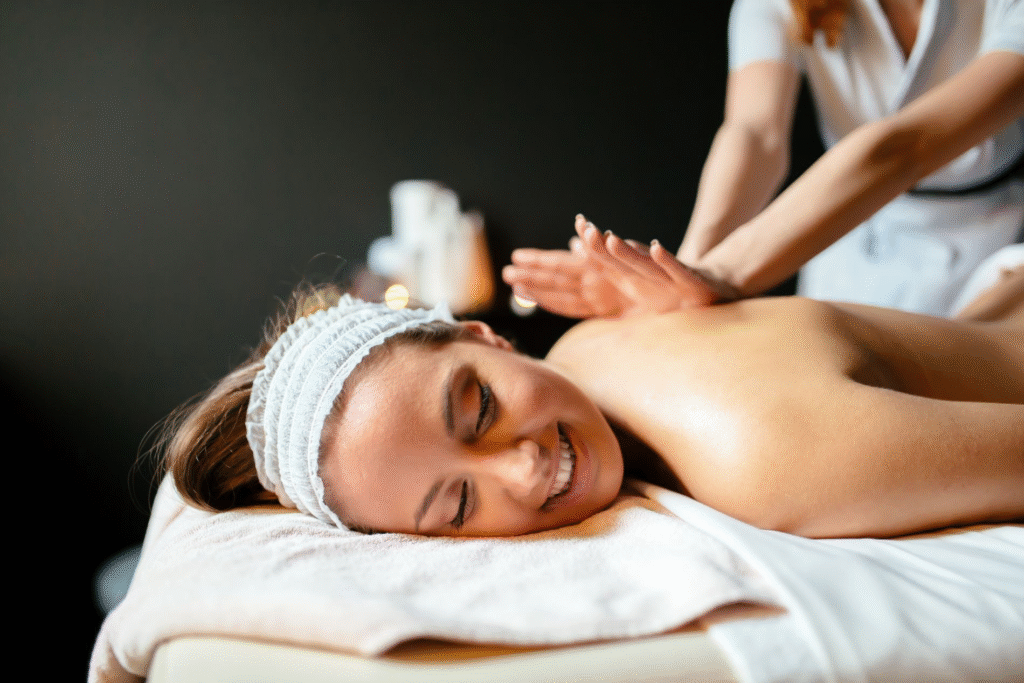
If you’re new to massage, here’s what typically happens:
- Consultation: Your therapist will ask about your health, stress level, and preferences.
- Environment: A calm space with soft lighting, gentle music, and aromatherapy oils.
- Treatment: You’ll be covered with towels for comfort and modesty.
- Communication: Always let your therapist know if pressure feels too strong or too light.
- Aftercare: Drink plenty of water and rest — your body continues to process the benefits for hours after the session.
Pro Tip: Avoid eating heavily right before your massage, and arrive 10–15 minutes early to transition into a relaxed mindset.
10. Choosing the Right Wellness Spa
Not all spas are equal. When selecting a spa for your next stress relief massage, consider:
- Certified Therapists: Ensure the practitioners are trained and licensed.
- Hygiene Standards: Cleanliness and professionalism are non-negotiable.
- Treatment Variety: A good spa offers a mix of traditional and modern wellness treatments.
- Ambience: Look for tranquil settings with calming music, aromatherapy, and personalized care.
- Customer Reviews: Feedback from other clients often reveals the spa’s true quality.
Some high-end spas even integrate hydrotherapy pools, meditation spaces, or herbal tea lounges — turning your massage into a full-day rejuvenation experience.
11. Beyond Relaxation: The Deeper Meaning of Massage
At its core, massage is not just about easing muscles — it’s about reconnecting with yourself.
When you receive a massage, your body releases the tension that has been silently carried from work, emotions, and daily stress. The slow rhythm of touch invites you to breathe deeper, be present, and listen to your body’s needs.
In this way, massage therapy benefits extend into emotional healing. It reminds us that self-care is not selfish — it’s a necessary act of love that allows us to show up fully in life.
12. The Future of Stress Relief: Integrative Wellness
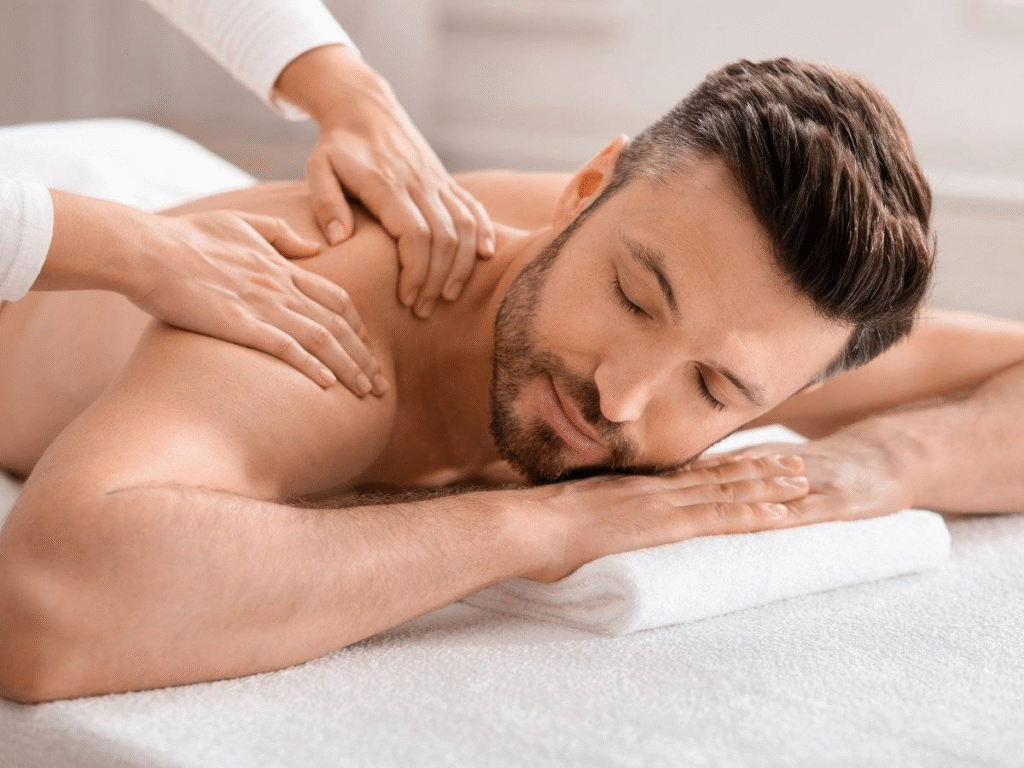
As the wellness industry evolves, the line between medical care and relaxation continues to blur. Hospitals, corporate offices, and even schools are beginning to integrate stress relief massage and wellness treatments into their programs.
Imagine a world where massage isn’t just a spa experience but a regular part of preventive health — improving focus, reducing burnout, and supporting emotional resilience. That future is already unfolding, and it starts with acknowledging the healing power of touch.
Conclusion: Rediscovering Balance Through Touch
In a society that values speed over stillness, massage therapy offers a vital reminder — healing begins when we slow down.
The massage therapy benefits go beyond the physical: they touch the mind, emotions, and soul. Whether you choose a deep tissue massage after a long week, a calming aromatherapy session, or a holistic spa ritual with meditation and sound therapy, each touch invites you to return to your natural state of balance.
So the next time you feel overwhelmed or disconnected, remember: peace is only a touch away.
Book that stress relief massage, close your eyes, and let your body do what it’s designed to do — heal.



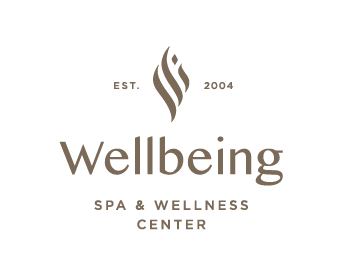
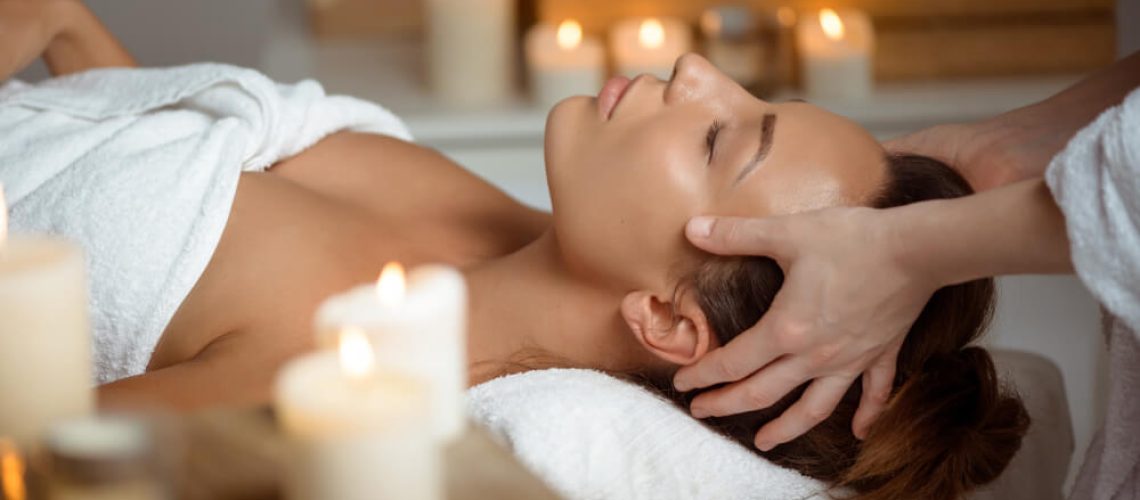
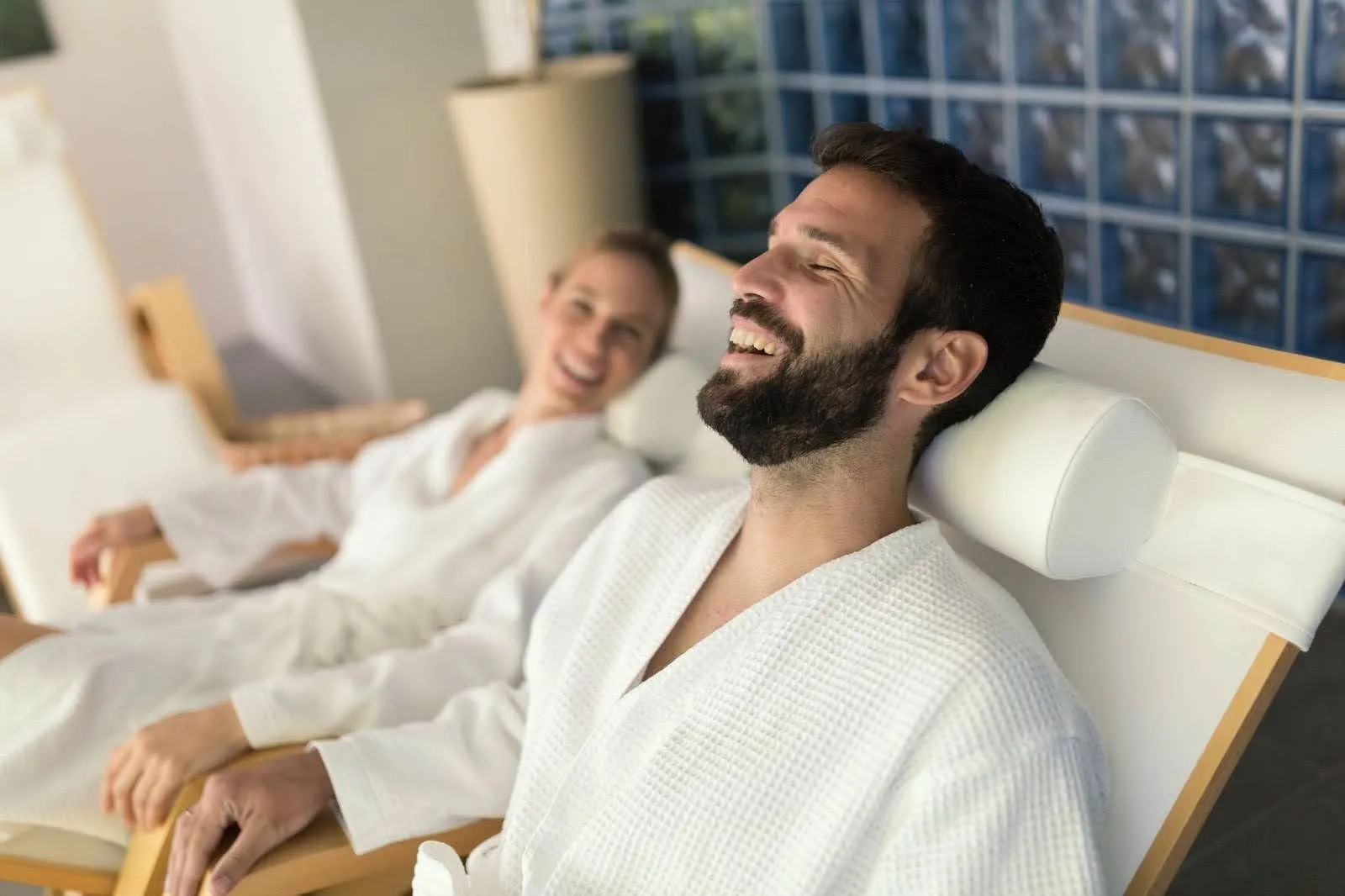
Leave a Reply